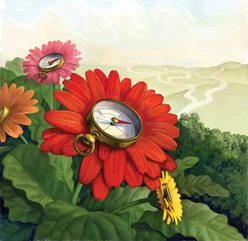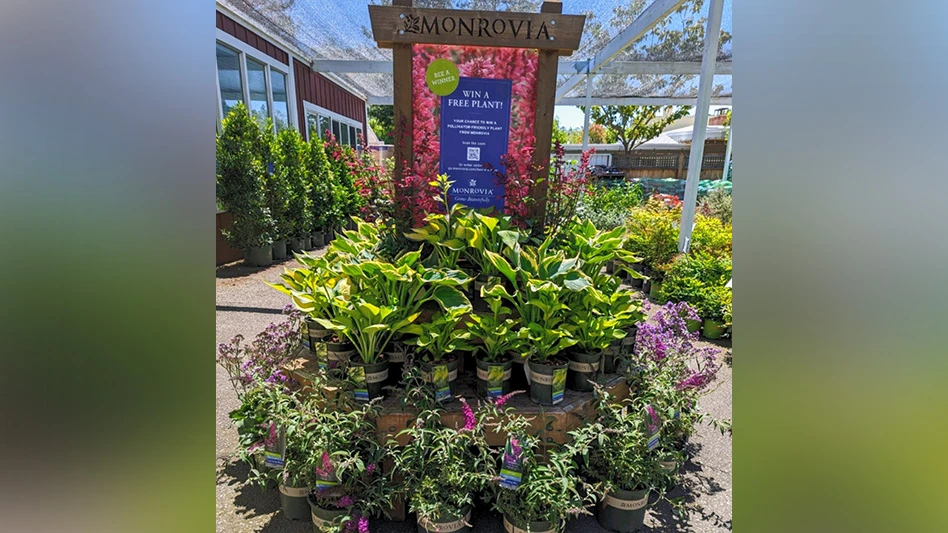
 The numbers are in, and they’re not all that bad. Of course, they’re not necessarily good, either. In fact, if the nearly 200 respondents to Garden Center magazine’s annual State of the Industry survey told us anything, it’s that their status is still in “quo” mode. Well, that and the reiteration of a notion with which we’re all familiar: Ma Nature still carries a big stick—and speaks rather loudly on occasion.
The numbers are in, and they’re not all that bad. Of course, they’re not necessarily good, either. In fact, if the nearly 200 respondents to Garden Center magazine’s annual State of the Industry survey told us anything, it’s that their status is still in “quo” mode. Well, that and the reiteration of a notion with which we’re all familiar: Ma Nature still carries a big stick—and speaks rather loudly on occasion.
The survey focused on the spring 2010 season, and we asked garden center operators around the country to gauge how their stores did with regard to sales, general and category-specific, compared to the year prior. The statistical breakdown will follow on subsequent pages—and is surely worth a look. But the story here seems to focus on the prevailing thought that, with few exceptions, the 2010 “Big Picture” looked a lot like its predecessor.
Only in the categories of vegetables/edibles, perennials and organic products did respondents show a notable increase in sales from the previous year to this past spring. Elsewhere, the numbers “bunched” in the middle categories reflecting little to no gain—and little to no loss.
So, given no significant exclamation point for the here and now, is there something to punctuate what’s to come? Please read on to see how several industry pros addressed that question.





Marriage in the Making?
Josh Schneider, Cultivaris / www.cultivaris.com / San Diego, Calif.
I think people are moving—but not moving quickly and not moving far. They are spending more time at home and looking around and seeing what “little” stuff needs to be done while they think about the bigger projects and ideas. They’re talking about it with family and friends and taking only small steps.
They’re going to garden centers—it seems to me foot traffic is up—but they aren’t necessarily making big purchases. They’re spending time, though —time planning, looking, watching, asking questions and looking some more. Then they’re going back home and imagining. “How would this big tree look?” “What would that look like if I tore down that shed and built a gazebo?” Wait and see what happens next seems to be the mantra.
With the political situation being so uncertain, business people are just so darned unsure.
All this not-knowing and vagueness leaves people feeling mildly unsettled. They are waiting and seeing. This gives us a couple changes for good. First and foremost: Since people are moving slowly, they have time to consider. By spending more time at the garden center with products and with our people, it’s more time for customer interaction. 
The second thing is that it gives us the chance to develop those mid-level purchases – smaller trees or not-quite-so-expensive pottery (that will need to be filled up) to decorate their patio or side garden.
I think the customer isn’t looking to “get married” but they are looking to date a bit. The purchases and decisions that don’t seem so monumental are the likeliest ones to get made. If we can facilitate those comfortable decisions, and wait with our customers—until the fog lifts a bit and we can all see more clearly—I think we might hear wedding bells.
Opportunities abound
Chad Harris, The Garden Gates / www.thegardengates.com / Metarie, La.
Our business had been through much worse times (see Hurricane Katrina) that make an economic downturn like we’re going through now seem like a Sunday evening joy-ride in the park.
As I addressed the current economic situation (and continue to address it), I focused specifically on several areas, starting with marketing.
Today the greatest opportunities are right in front of each and every one of us. Competition creates opportunities in economic times like no other. This is the time to take your market. This is the time to increase your customer base. This is the time to stand and be the leaders in your community—which clearly will translate into repeat customers (which ultimately will lead to greater revenue per transaction).
Next, I focused (continue to focus) on branding. Branded products allow your company to offer something special that the monsters [mass merchants] don’t offer, which translates into great profit margins. As it takes time to source, manufacture and sell your own custom products, the true reward is margins of 700 to 1,000 percent. Why do you think the monsters are so successful? They aren’t smarter!
Finally, there’s customer service. This is a prime opportunity to make your customer service on par with a stay at The Ritz-Carlton Hotel. The most important asset we have is that warm body walking through the doors each day.
Where do we go from here?
Steve Smith, Sunnyside Nurseries / www.sunnysidenursery.net / Marysville, Wash.
We got killed by the weather this year, so we’re addressing the question while in salvage mode. Our position for the rest of the season is to adjust our budget to reflect actual sales and try to salvage the season by cutting labor and smart buying and getting creative with how to get rid of what we have.
 The year is not a total loss, but it could be if we don’t watch our costs closely from here on out. We always keep our stock looking tip-top no matter what time of year it is or how the season how gone, so we are fertilizing and grooming and keeping fresh color on the benches and impressing the customers that do manage to make it down to the store.
The year is not a total loss, but it could be if we don’t watch our costs closely from here on out. We always keep our stock looking tip-top no matter what time of year it is or how the season how gone, so we are fertilizing and grooming and keeping fresh color on the benches and impressing the customers that do manage to make it down to the store.
We will probably lower ourselves to a clearance sale in August to reduce inventory, take a few lumps and then optimistically plan for next year like a bunch of dumb fools.
Such is the life of a nurseryman.
Diversity drives the ship
Paul Reiner, Oakland Nursery / www.oaklandnursery.com / Columbus, Ohio
We had a great April, then we had terrible weather in May. It was awful for Mother’s Day weekend—cold and wet. May in general just did us no favors. So, even though we bounced back some in June and July, it wasn’t enough to recover from the hit we took in May.
We’ve got the three stores, and we try to be diverse with what we offer. And I think that gives us an advantage —and will give us an advantage in the future. Oakland is recognized as one of the best garden centers in the country. Oakland Design Associates, our design build, construction and management landscape architecture firm, provides a full range of professional services to both residential and commercial clients. Oakland Irrigation, Interiorscapes & Streetscapes completes our quest to be a total horticulture entity.
My philosophy is have a lot of inventory and move a lot of inventory, and that’s worked for us. People are drawn to the store because they know they’ll find what they’re looking for—and maybe some things they weren’t looking for. I don’t know what works for everyone else, but I do know that strategy is good for Oakland.

Explore the August 2010 Issue
Check out more from this issue and find your next story to read.
Latest from Garden Center
- This Florida garden center's busiest days are in the fall, not spring. Find out how they do it
- Terra Nova Nurseries releases new agastache variety, 'Peach Pearl'
- The Certified Shopify Online Garden Center provides local retailers with ecommerce tool
- Meet the All-America Selections AAS winners for 2025
- Endless Summer hydrangeas and Suntory Senetti glam up Grammys red carpet
- Ball Seed releases 2025 edition of 'Thrive and Flourish' for landscape and garden retail
- American Floral Endowment's Fred C. Gloeckner Foundation Research Fund accepting grant proposals
- Floral Marketing Fund and CalFlowers partner to advance floral industry





